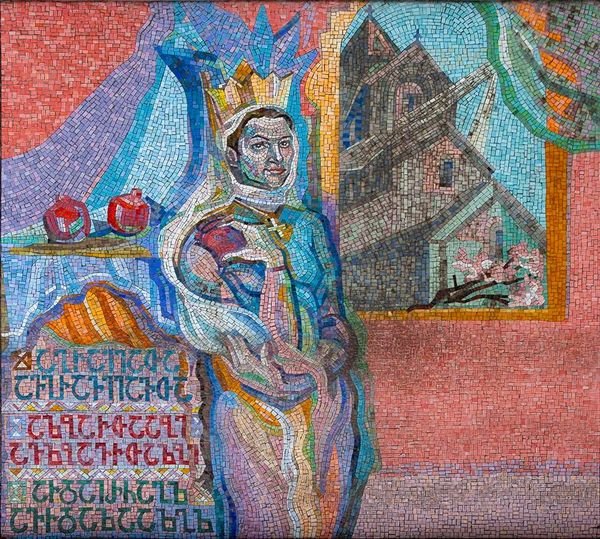
The Georgian Golden age.Queen Tamar.
Queen Tamar,also known as Tamar the Great, was a ruler of Georgia who lived between the 12th and 13th centuries AD. This monarch presided over what is today known as the Georgian Golden Age . This was a period that began in the 12th century AD with the reign of King David IV (the Builder ), and ended shortly after the death of Queen Tamar in the early 13th centuries AD. Within this golden age, the period of Tamar’s reign has sometimes been regarded as the point when the Kingdom of Georgia was at its zenith.
Queen Tamar was born in 1166 AD to King George III and Queen Burdukhan. Tamar was the royal couple’s first child, and it has been claimed that the Georgian king decided that when his daughter reached the age of 12, she would be his co-ruler.
The king made such a decision as he had intended Tamar to inherit his throne. The Kingdom of Georgia, however, had not yet had a female ruler, and George hoped to ensure that the nobles would accept her as their next ruler. Thus, in 1178 AD, Tamar co-ruled the Kingdom of Georgia with her father.
In 1184 AD, George III died, and was succeeded by his daughter. Depending on how one prefers to portray the queen, one of two versions of events may be chosen. On the one hand, George’s decision to allow Tamar to rule by his side bore fruit, and the nobles accepted Tamar as their new ruler, thus allowing a smooth transition of power. This is perhaps the conventional view, and an alternate version of events has been suggested elsewhere. According to this second version, the nobles were far from being content with Tamar’s ascension to the Georgian throne, and rebelled against her rule. As one might expect, Tamar ruthlessly got rid of those who opposed her rule, thus cementing her grip on power. As the conventional view depicts Tamar as a paragon of virtue, the glossing over of the rebellion and its destruction by Tamar (if these indeed happened) may be understandable, as such incidents would serve only to tarnish the image of a queen who is often regarded as a virtuous ruler.
Once Tamar secured her power (whether by crushing a rebellion or by obtaining the approval of the nobles from the start), she could focus on running the kingdom. One of the first things she did during the beginning of her reign was to convene a Church Council.
On the one hand, this has been taken as a sign of Tamar’s piety and respect for the Church. On the other hand, as the Church was another powerful institution in the kingdom, Tamar had to ensure obedience. Thus, the Council was, according to one interpretation, really a means of removing dissenting clergymen from the hierarchy of the Georgian Orthodox Church, and replacing them with her loyal supporters.
Under Tamar’s rule, Georgia successfully defended itself against its enemies. The Kingdom of Georgia was threatened by invasion from several Muslim rulers, and the Georgian army’s victory over them is often attributed to the will of God and the piety of Tamar.
In addition to protecting her own lands, Tamar also launched military campaigns to extend the borders of her kingdom. Apart from military success, Tamar’s reign also saw a flourishing in culture, as many remarkable monuments and works of literature were produced during this time. Georgia’s national epic, ‘The Knight in Panther’s Skin’ was produced during the reign of Tamar, and dedicated to the queen.
Tamar died in 1213. Shortly after her death, Georgia’s Golden Age came to an end, one of the main reasons being repeated external invasions, most notably by the Khwarezmians and the Mongols. Tamar is a highly respected figure in Georgian history. In the Georgian Orthodox Church, for example, she is regarded as a saint. In more modern times, Tamar has been featured on the Georgian 50 lira banknote, and a small airport in the country has been named after this powerful queen.
A fragment of a mosaic by Natalia Amirejibi de Pita
Presidential Palace of Georgia
Photo courtesy of Anna Kostomarova



 No products in the cart.
No products in the cart.